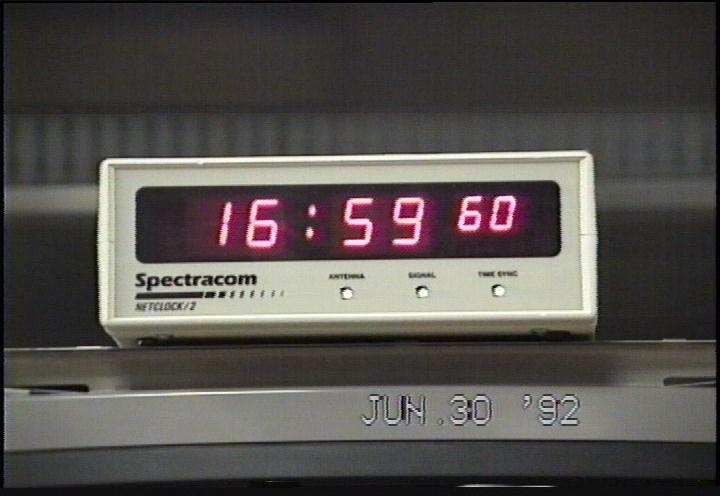Free and Open Source Software–and Other Market Failures
Free and Open Source Software–and Other Market Failures – Communications of the ACM
https://cacm.acm.org/practice/free-and-open-source-software-and-other-market-failures/
How to get started hacking NetBSD By: Taylor Campbell
How to get started hacking NetBSD By: Taylor Campbell
https://youtu.be/f7Kgzd2HwD8?si=w_SZ7L7oQAv7uoZ0
You've used a BSD, but have you used the open source of it to bend it to your will? Does it grant you freedom, or just confine you to a different set of bugs...
A quick look at the rewrite of coreutils with Rust and the history of NetBSD
A quick look at the rewrite of coreutils with Rust and the history of NetBSD
https://youtu.be/5JcaQWGMRVE
Oh! The tests of Rust rewrite of Unix core utils (cp, ls, echo, ...) is breaking; because of a non-supported command. I was going to send a minor PR to fix t...
Running quality assurance tests for NetBSD, from an enterprise software perspective
Quality Assurance at the Operating System Level - Things Learned
https://community.sap.com/t5/open-source-blogs/quality-assurance-at-the-operating-system-level-things-learned/ba-p/13690893
A few years ago, I started using open source software. I exaggerate; it's been decades. The above screenshot show ST04, among other artifacts and a November 1999 time stamp, which puts the SAP R/3 ERP version somewhere between 3.1G / 1998: https://www.hpcwire.com/1998/01/16/sun-posts-record-benchm...

Running NetBSD on OmniOS using bhyve
Running NetBSD on OmniOS using bhyve
https://www.tumfatig.net/2024/running-netbsd-on-omnios-using-bhyve/
I want to run GoToSocial on some *BSD system. Because I am who I am, I went for using NetBSD 10.0 . And because my hypervisor is running bhyve on OmniOS , you get the title of this blog post. Don’t get too anxious, it is quite straightforward. So let the journey begin.

Why I run a BSD on a PC
Why I run a BSD on a PC
https://michal.sapka.me/bsd/why-bsd/
Reasons why BSD may be the best OS for you

Announcing NetBSD 10.0
Announcing NetBSD 10.0 (Mar 28, 2024)
https://netbsd.org/releases/formal-10/NetBSD-10.0.html
time_t is not GMT
https://www.jwz.org/blog/2024/03/time_t-is-not-gmt/
When I hear someone say "a Unix timestamp is in GMT" I die a little inside. It is muddy thinking that leads to many of the problems that plague this modern world. A time_t does not have a time zone at all. It is a point in time, a scalar value. A 'struct tm' is a point in spacetime, a vector value. If you are trying to express a point in time to a human, you could do that by saying ...

https://www.gnu.org/software/hurd/news/2023-06-11-debian_gnu_hurd_2023.html
1982 video from the AT&T Archives: The UNIX Operating System
AT&T Archives: The UNIX Operating System
https://tilvids.com/videos/watch/28407fb6-876b-4d1d-85c3-b0b22f303979
In the late 1960s, Bell Laboratories computer scientists Dennis Ritchie and Ken Thompson started work on a project that was inspired by an operating system called Multics, a joint project of MIT, GE, and Bell Labs. The host and narrator of this film, Victor Vyssotsky, also had worked on the Multics project. Ritchie and Thompson, recognizing some of the problems with the Multics OS, set out to create a more useful, flexible, and portable system for programmers to work with. What's fascinating about the growth of UNIX is the long amount of time that it was given to develop, almost organically, and based on the needs of the users and programmers. The first installation of the program was done as late as 1972 (on a NY Telephone branch computer). It was in conjunction with the refinement of the C programming language, principally designed by Dennis Ritchie. Because the Bell System had limitations placed by the government that prevented them from selling software, UNIX was made available under license to universities and the government. This helped further its development, as well as making it a more "open" system. This film "The UNIX System: Making Computers More Productive", is one of two that Bell Labs made in 1982 about UNIX's significance, impact and usability. Even 10 years after its first installation, it's still an introduction to the system. The other film, "The UNIX System: Making Computers Easier to Use", is roughly the same, only a little shorter. The former film was geared towards software developers and computer science students, the latter towards programmers specifically. The film contains interviews with primary developers Ritchie, Thompson, Brian Kernighan, and many others. While widespread use of UNIX has waned, most modern operating systems have at least a conceptual foundation in UNIX. Footage courtesy of AT&T Archives and History Center, Warren, NJ